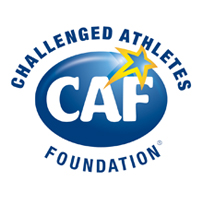Badwater Blues
Why does every year seem tougher than the last?
Four-time finisher
No matter how many times I attempt the Badwater Ultramarathon, it never seems to get any easier. Even though I “survived the fastest” in 2004, I’ve yet to have a good Badwater. Despite my best commitment to prepare more rigorously every year, the race always gets the better of me. So any guidance I might dispense in this article needs to be tapered by the fact that I’m still trying to figure things out.
Something I can state with relative certainty, though, is that San Francisco is probably the worst place on earth to train for Badwater. With daytime temperatures rarely cresting 70 degrees Fahrenheit, and a frigid fog dampening the air, Mark Twain had been attributed with once saying that the coldest winter he ever spent was summer in San Francisco. Bummer I live in San Francisco.
Yet British Columbia isn’t a whole lot warmer, and that doesn’t seem to be slowing down Ferg Hawke. The Canadian native and two-time Badwater Ultramarathon runner-up has devised his own version of Death Valley, right in his back yard. Hawke built a solarium off the rear of his house, and then stuck a treadmill in it. Daytime temperatures inside can reach 130 degrees Fahrenheit, which simulate race day conditions quite nicely. The enterprising ultramarathoner spends three to four days a week inside training leading up to the race.
Still, Hawke realizes the importance of being on the actual course, and also spends time training in Death Valley prior to the event. There isn’t anything, really, that can emulate the real deal, not even a 130 degree solarium. They don’t call it “The World’s Toughest Footrace” for nothing.
When it’s 120 degrees outside and there’s a 25 mph headwind, having spent time in such elements prior to the race is invaluable. Nothing can prepare you for the arduous climb up Townes Pass like spending time training on Townes Pass. Hawke realizes this, and being the consummate pro that he is, gets out to Death Valley a few times before the event.
There are no “tricks” for running 135-miles across Death Valley in July, but something I’ve found useful in coping with the “blow dryer in your face” effect is using saline spray to help moisten your nasal passage. As a surfer, I’ve learned that having saltwater shot up your nose actually helps prevent your sinuses from drying out. Thus I’ve been bringing a tube of saline spray to Badwater and misting liberally along the run.
I’ve also found that much of the high-tech running gear I typically wear seems to be the wrong fabric for Badwater temperatures. Having a garment that wicks away moisture is great up to a point, but when temperatures crest 100 degrees, the evaporative cooling effect of such material is disappointingly transient. What I’ve found to remain coolest longest is thick canvas or terrycloth. These fabrics soak up water and retain dampness for greater periods. The tradeoff is that they’re heavy.
The added weight, however, isn’t as frustrating as my inability to stay on pace. What I’ve discovered over the years is something every Badwater veteran already knows: you can’t compare conditions one year verses the next. Differences in temperatures, humidity, wind speeds and wind direction, sandstorms, flashfloods, etc…all coalesce to create entirely distinct conditions each year. Trying to compare split times one year against a previous year can be like chasing a mirage.
So how, then, do you best prepare for a race that can throw just about anything your way? “I try really hard not to think about the heat. I just run and drink as much as I possibly can,” says Pam Reed. Staying in the present, and drinking as much as you can, sounds like a prudent strategy. Reed ought to know; not only is she the women’s record holder, she’s won the thing outright twice, handily disposing of yours truly on one such occasion.
Reed’s training secret really isn’t much of a secret at all. She lives in Arizona and trains harder than anyone I know: “I run 4 times a day about 45 minutes to 1 hour. This is when it is about 105 or so out.” Beyond her natural ability, she’s committed to the core, unwilling to accept anything less than total devotion. Her phenomenal results are a testament to her dedication and drive. Train hard, get results. Don’t bonk.
And even if you train hard, you still can bonk. Just ask Scott Jurek, who was dehydrated and vomiting after Panamint Springs. “I got behind on fluids,” he says, “and paid for it.”
But Badwater is about overcoming low points and persevering. Jurek regrouped and went on not only to win the race, but to smash the course record in the process. How did he do it? “The key to turning it around was listening to my body, finding out what was wrong, and then correcting it. It’s impossible to fight the body.”
So there you have some advice from the best at Badwater on how to make your experience a positive one. My suggestion is to listen to everyone, yet follow no one. What works for others might not work for you. The only “certainty” with this race is that anything less than 100% commitment won’t get you across the finish line. Experiment with what works best for you, train like crazy, and hope for cooler temperatures and a tailwind…just don’t plan on it.
2004 Badwater champ Dean Karnazes is author of the bestseller, Ultramarathon Man: Confessions of an All-Night Runner. Info at www.Ultramarathonman.com










